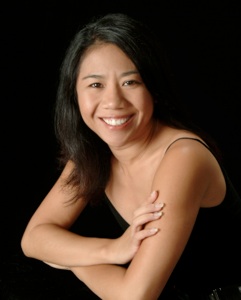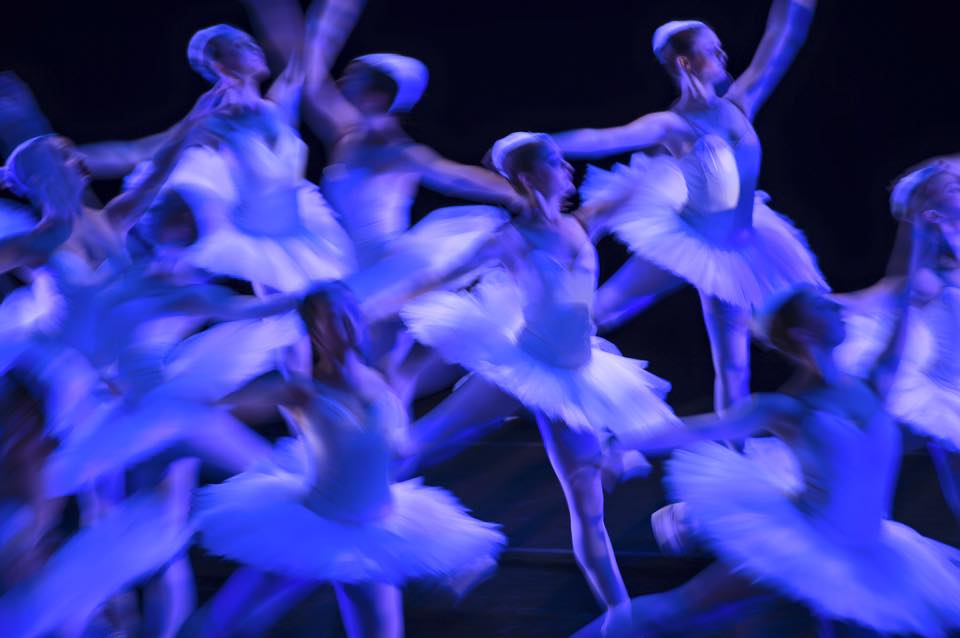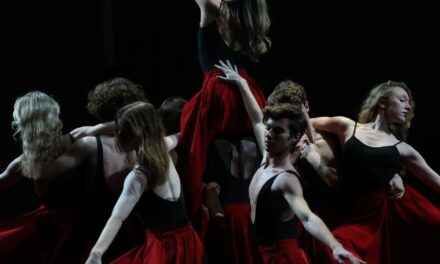Photo by Sam English
Human Abstract
Choreographed by Lucas Jervies
Review by Samantha Morrison
Entire contents are copyright © 2018, by Samantha Morrison. All rights reserved.
Human Abstract opens with a conversation between a group of collaborators. The discussion is at times joyful and creative, at times aggressive and adversarial. It is a declaration of the intentions of the piece, creative experience with a different definition, one that will break the fourth plane and blends dance, visual art, and theatre. It is not storytelling…but it is a narrative of the human condition. It explores the human connection.
We move through life in real time without pre-prepared choreography, text, script, or score. Of all the arts, dance is the most ephemeral and in some ways the closest to real life. There is no going back to reread the text, no picture to study later. You watch the dancers, feel the physicality of their art, are moved by their passion and internalize an unspoken narrative.
Human Abstract asks; what happens when our internal dialog has no language in the real world? What happens when we are frustrated by conventions that are meaningless to describe our desires in life? When your authentic self has no safe space to exist? The nude leotards they wear as they probe these difficult questions accentuate the vulnerability of the dancers. The simple, stripped down costumes are not titillating, rather they are in some ways gender neutral as the dancers seek partners and support in a continual unfulfilling cycle. As the title, Human Abstract suggests, this piece is about sexuality in the abstract. Abstraction moves beyond depiction to the underlying concept. We are all sexual beings; it is a part of humanity.
The opening segment of Human Abstract I described earlier is also a mirror to the actual process of this piece. Collaboration is not always an easy process for artists. Bending one’s individual vision to accommodate someone else can be difficult. Heading up a group of various artists and ending with a cogent and elegant work takes a master with a distinct vision. However, it demands a visionary with respect and confidence in the people with which he has chosen to work. Lucas Jervies’ process is described by scenic designer Ezra Kellerman, “Lucas will ask me what I think of a movement or a stage presence and he isn’t placating me, he’s expecting me to be truthful in my response because he thinks highly of what I have to say and think on the matter.” That respectful work process has affected the evolution of this piece over the last two years. Mr. Jervies and his collaborators, the Louisville Ballet Creative Director Robert Curran and the company dancers, Louisville Visual Art, Composer Adam Ster, Scenic Designers Ezra Kellerman, Andrew Cozzens, Tiffany Carbonneau, and Lighting Director Jesse Alford have created a remarkably evolved work of art. It is tighter; more sophisticated and uses the space most effectively. It is supremely inventive. The three-dimensional space is prescribed at times by the tight discipline of mandala images which are very complex organizations of the movement, ending in an intertwined pose abstracting the figures. Those images are then suddenly swept away like the colored sands of an actual mandala, only to be replaced by movement that is not defined by steps but that rather shatters the space with erratic movement.
As a piece Human Abstract demands a level of concentration and technique that many ballet companies could not reach. The strength, the emotional investment and the stamina of the dancers are phenomenal. It confirms that the Louisville Ballet Company is composed of extraordinary artists. As an ensemble they are superb. However, special note is awarded for the performance by Luke Yee, the central character, whose multi-discipline talents delivers both compelling dialog and song throughout the piece. He moves seamlessly between all of these demands. I do wish the sound had been handled better so his monologue had been easier to hear.
I feel compelled to address the premature negative judgment of Human Abstract by some people in the community. The role of the artist in society is to seek truth in all its forms. They explore who we are and how and why we exist. Artists have throughout history spoken for those without a voice and questioned the world’s actions. Picasso painted the horrors of war in his painting “Guernica”. Steinbeck revealed the reality of abject poverty. Even a classical story ballet, Gisele, portrays the sometimes-tragic effects of class in society. Sexual identity and the unfair treatment of people for a simple biological reality is a confounding and important issue today. That artists would explore the subject is only natural and right. Additionally, to judge a work of art without ever experiencing it is dishonest and wrong.
Human Abstract
February 28 – March 3, 2019
Louisville Ballet
Bomhard Theatre
Kentucky Center for the Performing Arts
501 West Main Street
Louisville, KY 40203
Louisvilleballet.org
Samantha Morrison is a special contributor to Arts-Louisville.com. She is an artist and writer with over twenty years of experience in the visual and performing arts.
2019 Arts-Louisville/Broadway World Theatre Award Sponsorship provided by







